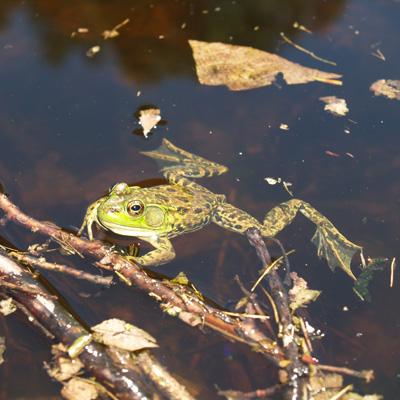Assessing the Potential Effects of Changes in Climate on the Range and Long-Term Persistence of the Mink Frog, Lithobates septentrionalis, in the Northern Forest

Almost half of known amphibian species worldwide are declining, with approximately 100 species already thought to be extinct. Climate change is of particular concern for amphibians which are highly prone to desiccation in the terrestrial environment where increases in temperature or reduction in moisture can prove rapidly fatal. Climate change can also reduce the longevity of vernal pools or temporary ponds and alter water temperatures and levels of dissolved oxygen such that egg and larval development fail.
The mink frog is an amphibian that needs cold, highly-oxygenated water of high elevations for successful egg and larval development and is likely to be highly threatened by climate change. NSRC researchers evaluated the effects of climate change on the geographic range and future persistence of the mink frog in the Northern Forest. They determined how changes in water temperature and dissolved oxygen influence egg and larval survival; established the current occurrence of this species in the Northern Forest; and predicted the future distribution of mink frog in the region.
Researchers used a combination of laboratory experiments, field studies at different elevations and latitudes, and computer models to understand what drives the occurrence of this frog species. Their findings show that distribution of the mink frog is linked to water temperature and dissolved oxygen, but other factors are involved, such as food competition with other frog species that prefer warmer temperatures. This study establishes methods that can be used to assess other amphibian species at risk to climate change.
